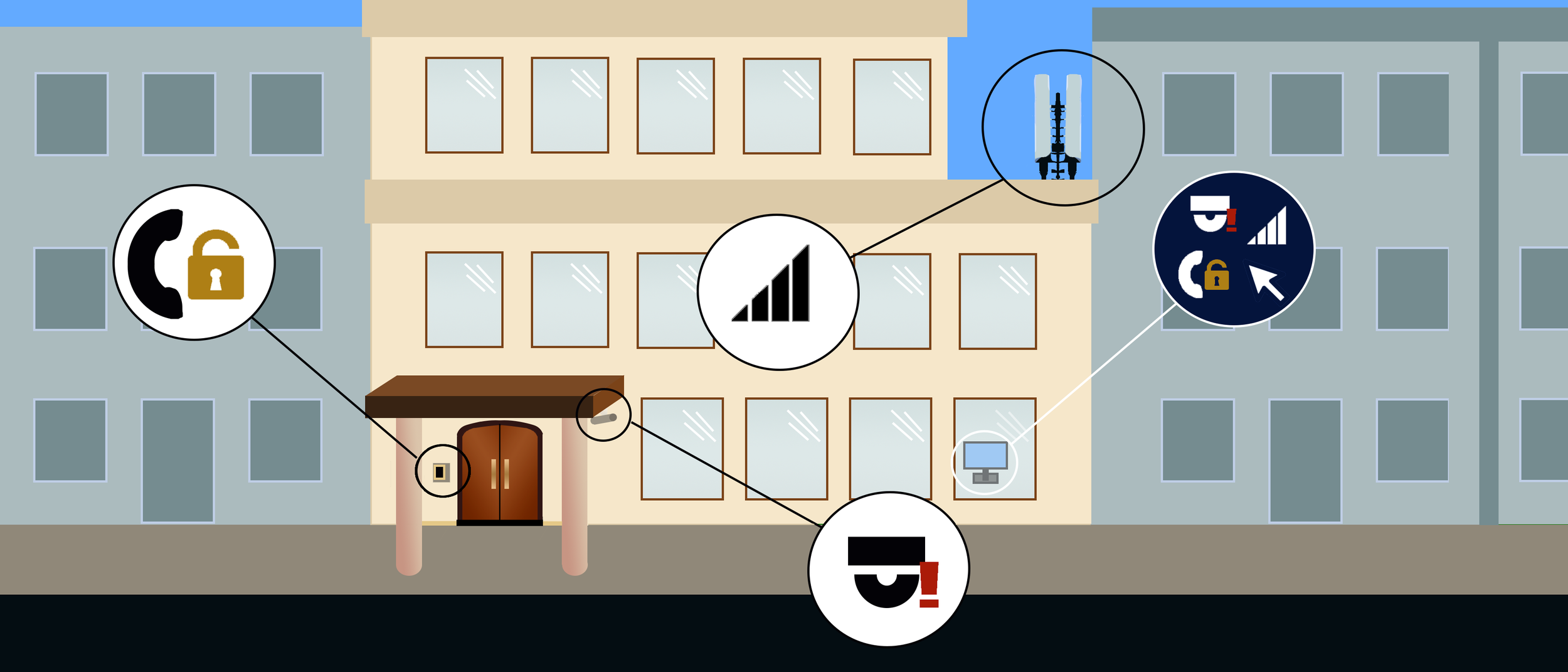Image © 2023 Gavin George
Today, IoT technology is being deployed in property management settings more than ever before. On the marketing side, smart buildings are more attractive to potential tenants interested in a high-tech living environment; but that is just the tip of the iceberg.
From predictive maintenance to upgrades in safety and security; smart building technology has unprecedented potential to streamline property management operations as well.
1. Enhancing tenant experiences
Smart home technology is an undeniable trend in consumer electronics in recent years. This means that implementation of smart building technologies can deliver a competitive edge in attracting potential tenants looking for a high-tech living experience. Smart building technologies most visibly deliver value to tenants through their convenience. Technologies such as smart thermostats, smart lighting, and remote access control can be controlled by tech-savvy tenants using a smartphone application no matter where they are.
Amenities such as plug-in hybrid electric vehicle (PHEV) charging stations are often built on IoT platforms as well, due to the need for smart metering and remote monitoring. As electric vehicles are seeing wider adoption every year, PHEV charging stations have never been in such high demand, and their availability may be a factor that tenants consider when looking for a place to live.
While potential tenants who are tech-savvy or drive electric vehicles are worthy of consideration on the marketing side of property management, the potential that smart building technology has to attract them is only the tip of the iceberg. The full range of potential applications of this technology is much heavier on the operations side.
2. Improving energy efficiency
One of the most notable benefits that smart building technologies can deliver is their potential to optimize power usage in a building, particularly when it comes to lighting and climate control systems. For example, smart building technologies have been successfully integrated with building HVAC systems to automatically adjust temperature and power settings according to weather data and indoor temperature, humidity, and light levels measured by IoT sensors. The Hydraulic Institute found that this type of HVAC automation can reduce a system’s energy expenditure by 15-50%.
On the tenant side, smart plugs that automatically adjust current as needed can help them save up to 50% on energy expenditure from their power outlets. Tenants can also benefit from smart metering, as it gives them realtime visibility into their utility usage, enabling them to manage it more easily.
3. Predictive maintenance
Smart building technologies can also be used to detect problems with building infrastructure before they happen or take a turn for the worse. Building infrastructure such as plumbing, HVAC equipment, and electric wiring can all be monitored with sensors that feed data into predictive modeling programs which flag certain patterns that are typically observed before a maintenance incident occurs.
Sensors measuring moisture, vibrations, voltage, current, operating temperatures and energy expenditure can identify broken appliances, leaks and other issues before they interrupt utility functions at a property or cause damage to the structure and tenants’ personal property.
4. Upgrading security and safety
Security systems that use older CCTV systems can be cost inefficient and offer limited effectiveness when they require monitoring from on-site personnel. Because of these issues, property management companies are turning increasingly to remote physical security surveillance services, due to their cost-effectiveness.
Fire life safety systems can be improved by smart building technologies as well. Fire alarm systems have not changed much in about a half century, and their capabilities are generally limited to detection of smoke or manual triggering.
Newer technologies such as heat and flame detection systems can be integrated with fire life safety systems. They can do more than simply notify emergency personnel of a fire. They can also deliver details on what type of fire it is (chemical, electrical, etc.), as well as its intensity and footprint throughout the building. The delivery of these details would provide firefighters with better insight to reduce property damage and more importantly, loss of life.
5. Unprecedented potential for data-driven decision making
Data is what makes smart technology ‘smart.’ Data-driven decision making is key to successful operations, because it translates into well-informed governance. The fundamental benefit that underlies the adoption of all IoT technologies is their unprecedented potential to collect and analyze vast amounts of data that can be put to use by a business’s operations team. It’s a gift that keeps on giving.
If you are interested in learning more about smart building technology and how it might be applied in your business; don’t hesitate to contact us. We work with leading reputable providers of smart building technology services with world-class expertise that can assist you in finding and implementing a custom solution for any property.

